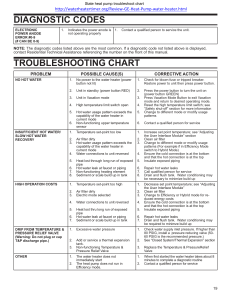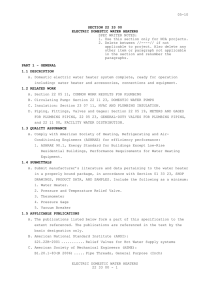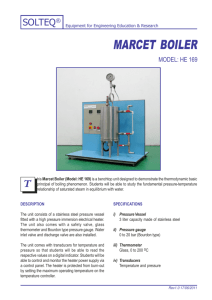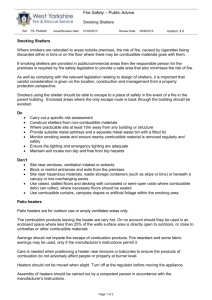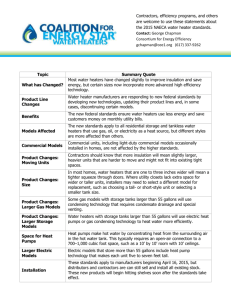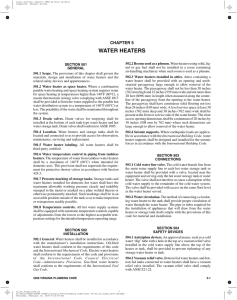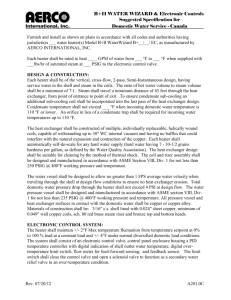Selecting and Maintaining Your Water Heater
advertisement
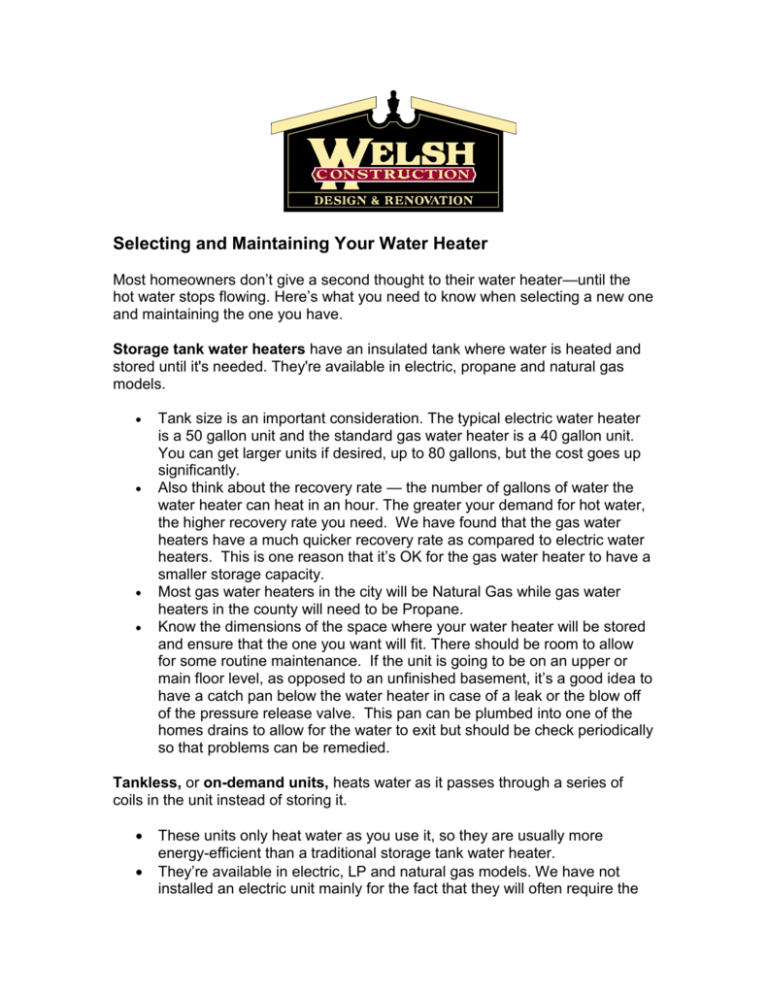
Selecting and Maintaining Your Water Heater Most homeowners don’t give a second thought to their water heater—until the hot water stops flowing. Here’s what you need to know when selecting a new one and maintaining the one you have. Storage tank water heaters have an insulated tank where water is heated and stored until it's needed. They're available in electric, propane and natural gas models. Tank size is an important consideration. The typical electric water heater is a 50 gallon unit and the standard gas water heater is a 40 gallon unit. You can get larger units if desired, up to 80 gallons, but the cost goes up significantly. Also think about the recovery rate — the number of gallons of water the water heater can heat in an hour. The greater your demand for hot water, the higher recovery rate you need. We have found that the gas water heaters have a much quicker recovery rate as compared to electric water heaters. This is one reason that it’s OK for the gas water heater to have a smaller storage capacity. Most gas water heaters in the city will be Natural Gas while gas water heaters in the county will need to be Propane. Know the dimensions of the space where your water heater will be stored and ensure that the one you want will fit. There should be room to allow for some routine maintenance. If the unit is going to be on an upper or main floor level, as opposed to an unfinished basement, it’s a good idea to have a catch pan below the water heater in case of a leak or the blow off of the pressure release valve. This pan can be plumbed into one of the homes drains to allow for the water to exit but should be check periodically so that problems can be remedied. Tankless, or on-demand units, heats water as it passes through a series of coils in the unit instead of storing it. These units only heat water as you use it, so they are usually more energy-efficient than a traditional storage tank water heater. They’re available in electric, LP and natural gas models. We have not installed an electric unit mainly for the fact that they will often require the home to add an additional electrical panel in order to handle the electrical load requirement. We’ve installed several of the LP and natural gas models in both the county and the city. The upfront cost for an ondemand unit can be significantly higher as compared to a tanked unit. This cost is driven in part by the location of the unit, the availability of a gas supply, and the venting requirements for these units. There are companies that make units designed to be located on the exterior of the house. This can simplify the installation. I’ve read that it can take 3 to 5 years to recoup the additional unit and installation cost of an on-demand unit through energy savings. Of course this time will be driven by how much hot water you use and the cost of energy. Energy-efficiency Whichever fuel source you use, a water heater can be the third largest energy user in your home, so you’ll want a unit that offers energy and cost savings. Research the energy-efficiency and yearly operating costs of a water heater before you decide which one is right for your needs. You can find this info listed clearly on the Energy Star label. Maintenance tips The biggest problem that we see in our area with water heaters is the buildup of sediment and lime deposits in the bottom of the tank. This lime or sediment build up can rob the unit of its efficiency and ability to produce hot water. On electric units there are two coils that heat the water and the lower coil can become covered with lime and can even corrode to the point of where it no longer works at all. It doesn’t hurt to periodically have the water heater drained and to clean this lime out of the tank. How often this needs to be done will be a factor of how hard or how much lime is in your water source. The sediment can cause noise in gas water heaters and can also corrode the tank. The addition of a water softener can reduce the problem of sediment build up within a water heater. Water heaters should have a pressure release valve located at the top of the unit. This valve should be check annually to be sure that it is operating properly. If the valve isn’t operating properly, the pressure in the tank can build up to unsafe levels. The valve can be tripped manually by lifting up on the lever located on the top of the valve. Hot water will come out of the valve so caution should be used. Most new units are installed with a tube so that the hot water goes down towards the floor. Some older units just allow the water to come out at the top of the unit. You should have a towel or container to catch the water that comes out. Just lift the valve slightly to be sure that it is not clogged and when you release the valve the water should stop coming out. If no water comes out or if it won’t stop coming out when released, the valve needs to be replaced.
